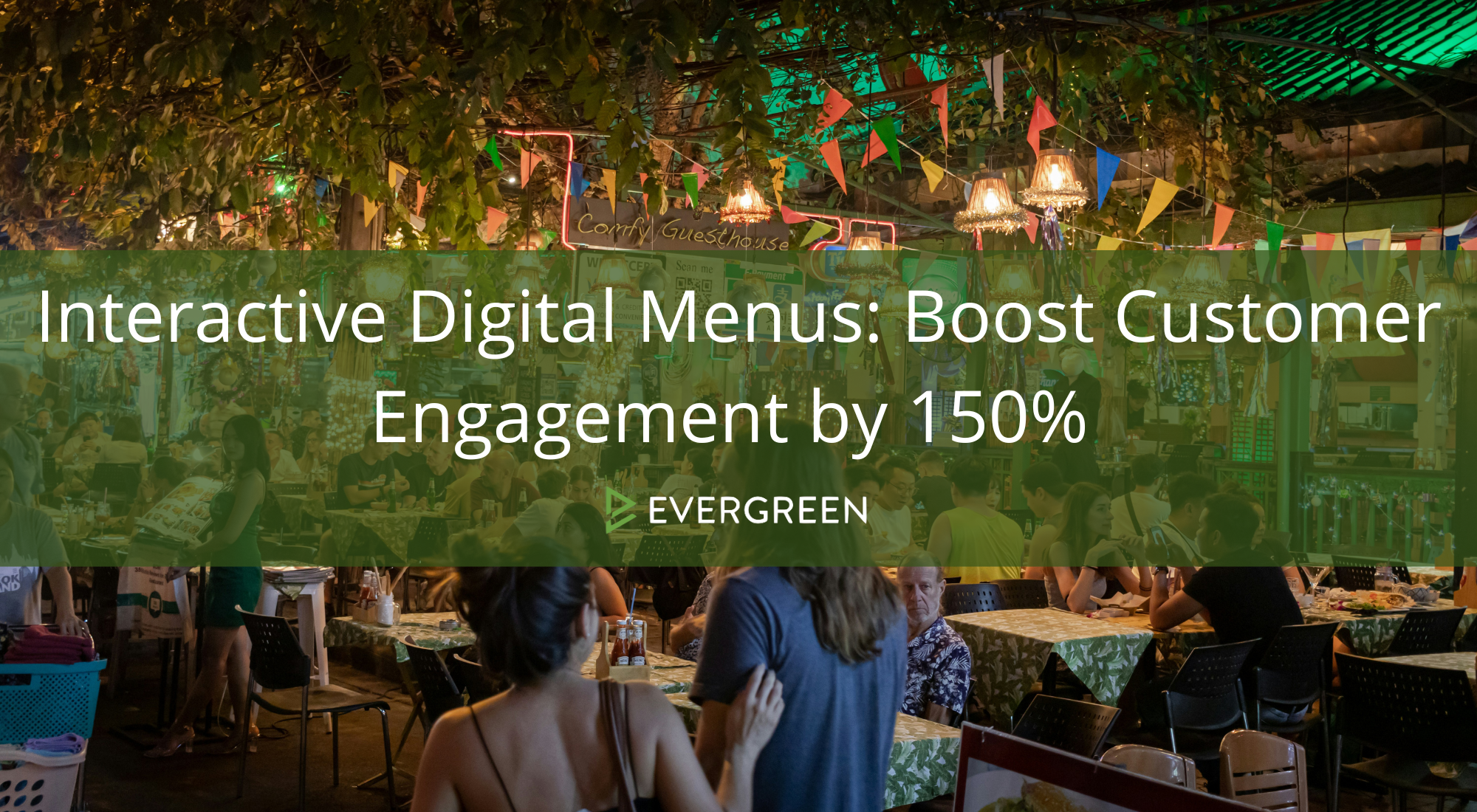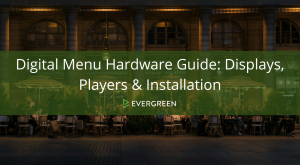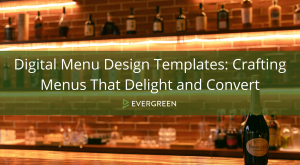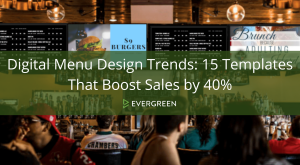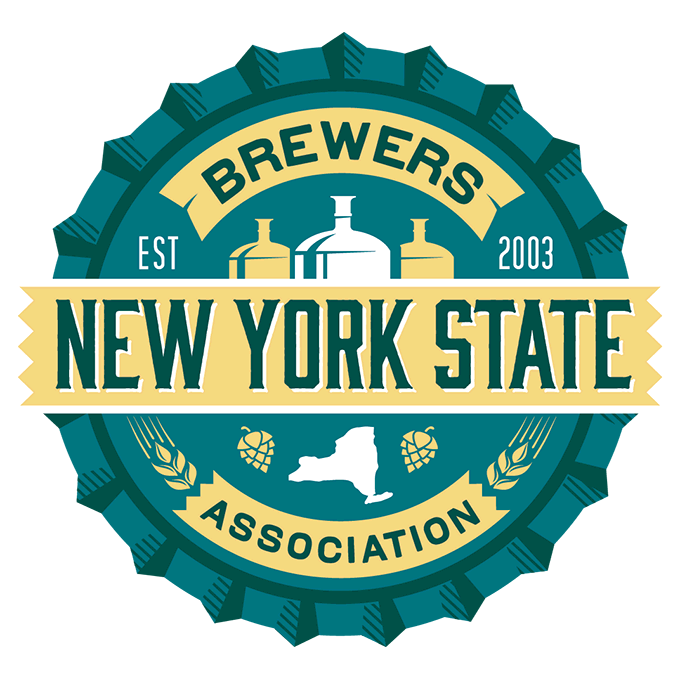Interactive digital menus represent the next evolution in restaurant technology, transforming passive menu viewing into engaging customer experiences that drive satisfaction, loyalty, and revenue growth. Restaurants implementing interactive digital menu systems report average engagement increases of 150%, with some achieving improvements exceeding 250%.
Here we’ll explore the psychology of interactive engagement, proven implementation strategies, and the technology platforms that are reshaping how customers discover, explore, and order food in 2025.
The Psychology of Interactive Engagement
Understanding Customer Interaction Preferences
Modern diners expect interactive experiences that provide control, personalization, and entertainment value:
Control and Autonomy:
Self-Paced Exploration: Customers prefer controlling their menu browsing speed and depth
Personal Discovery: Interactive elements allow individual exploration without staff pressure
Customization Options: Real-time modification and personalization increase satisfaction by 67%
Information Access: On-demand detailed information empowers confident decision-making
Privacy: Independent exploration eliminates social pressure and embarrassment
Entertainment and Engagement:
Gamification Elements: Interactive challenges and rewards increase dwell time by 89%
Social Sharing: Photo-worthy interactive experiences boost social media engagement by 234%
Educational Content: Learning about food preparation and ingredients enhances perceived value
Surprise and Delight: Unexpected interactive features create memorable experiences
Brand Connection: Interactive storytelling builds emotional connections with restaurant brands
Cognitive Load and Decision Making
Interactive menus must balance engagement with decision efficiency:
Progressive Disclosure:
Layered Information: Basic information visible with details available on demand
Contextual Relevance: Showing appropriate information based on customer interaction patterns
Guided Discovery: Interactive pathways helping customers navigate complex menus efficiently
Smart Filtering: Dynamic filtering based on preferences, dietary restrictions, and budget
Recommendation Engines: AI-powered suggestions reducing choice paralysis
Attention Management:
Focus Direction: Interactive elements guiding attention to high-margin items
Engagement Rhythm: Balancing stimulation with calm decision-making periods
Cognitive Rest: Providing mental breaks during complex decision processes
Clear Hierarchy: Visual and interactive priorities aligned with business objectives
Exit Strategies: Easy ways to simplify interaction when customers feel overwhelmed
Types of Interactive Digital Menu Systems
Touch-Screen Kiosks and Table Tablets
Self-Service Kiosk Implementation:
Freestanding interactive ordering stations providing complete customer autonomy:
Core Functionality:
Full Menu Navigation: Complete menu browsing with categorization and search
Customization Interface: Visual modification tools for dietary preferences and allergies
Payment Integration: Secure payment processing with multiple payment method support
Order Tracking: Real-time order status and pickup/delivery time estimates
Loyalty Integration: Account access and reward redemption capabilities
Advanced Features:
Nutritional Calculator: Real-time nutritional information based on customizations
Allergen Management: Automatic filtering and warning systems for safety
Group Ordering: Multiple customer coordination for large orders
Upselling Intelligence: Smart recommendations based on current selections
Multi-Language Support: Real-time translation and culturally appropriate content
Implementation Success Factors:
Strategic Placement: High-traffic areas with adequate space for queuing
Intuitive Design: Clear visual hierarchy and familiar interaction patterns
Staff Integration: Backup support and assistance protocols
Accessibility Compliance: ADA-compliant design and alternative access methods
Maintenance Protocol: Regular cleaning, updates, and technical support
Performance Metrics:
McDonald’s interactive kiosk implementation across 2,500 locations:
67% increase in average order value through upselling
89% customer satisfaction with self-service option
23% reduction in order errors and customer complaints
156% increase in customization and modification requests
45% improvement in peak-hour throughput and efficiency
QR Code Interactive Experiences
Enhanced QR Code Implementation:
Beyond basic menu access to fully interactive mobile experiences:
Progressive Web App Features:
Native App Experience: Full-screen mobile experience without app download
Offline Capability: Menu browsing and order compilation without internet connection
Push Notifications: Order status updates and promotional messaging
Location Services: Table service integration and delivery coordination
Camera Integration: Photo sharing and social media connectivity
Interactive Elements:
Swipe and Tap Navigation: Intuitive mobile gestures for menu exploration
Zoom and Detail Views: High-resolution food photography with zoom capabilities
Interactive Ingredients: Tap ingredients for detailed sourcing and nutritional information
Preparation Videos: Short-form content showing cooking techniques and presentation
Customer Reviews: Interactive rating and review system with photo uploads
Personalization Features:
Preference Learning: AI-powered recommendation improvement over time
Order History: Quick reordering and modification of previous selections
Dietary Profiles: Saved dietary restrictions and preference filters
Budget Tools: Price range filtering and cost tracking for group orders
Social Integration: Friend recommendations and group ordering coordination
Case Study Results:
Shake Shack QR code interactive menu implementation:
134% increase in mobile ordering adoption
78% improvement in customer engagement metrics
234% boost in social media sharing and user-generated content
45% reduction in order-taking time and staff requirements
189% increase in loyalty program enrollment and engagement
Augmented Reality (AR) Menu Experiences
Immersive AR Implementation:
Cutting-edge technology creating unprecedented interactive experiences:
3D Food Visualization:
Realistic Portion Display: Accurate size and presentation preview before ordering
Ingredient Exploration: Interactive ingredient identification and sourcing information
Preparation Process: Time-lapse cooking demonstrations and technique explanations
Customization Preview: Real-time visualization of modifications and preferences
Nutritional Visualization: Interactive nutritional information with visual representations
Environmental Integration:
Table Integration: AR menu overlay on physical table surfaces
Ambient Information: Restaurant history, chef information, and behind-the-scenes content
Social Features: AR photo opportunities and social media integration
Gamification: Interactive challenges and loyalty program engagement
Cultural Context: Historical and cultural information about dishes and ingredients
Technical Requirements:
Device Compatibility: Smartphone and tablet AR capability support
Network Infrastructure: High-bandwidth requirements for 3D content delivery
Content Creation: Professional 3D modeling and AR development resources
User Education: Customer guidance and support for AR feature utilization
Fallback Options: Traditional menu access for non-AR compatible devices
Performance Impact:
Bareburger AR menu pilot program results:
289% increase in customer engagement and interaction time
167% improvement in customer education about ingredients and preparation
234% boost in social media sharing and viral marketing impact
89% increase in premium item selection and upselling success
145% improvement in customer satisfaction and experience ratings
Voice-Activated Interactive Systems
Conversational AI Integration:
Natural language processing enabling voice-controlled menu interaction:
Core Voice Capabilities:
Natural Language Queries: “What vegetarian options do you have under $15?”
Dietary Accommodation: “Show me gluten-free items that my dairy-free friend can also eat”
Preference Learning: “I liked the salmon last time, what’s similar today?”
Complex Orders: “I want the pasta without cheese but add extra vegetables and make it spicy”
Multi-Language Support: Real-time translation and culturally appropriate responses
Accessibility Features:
Vision Impairment Support: Complete menu navigation without visual interface
Motor Disability Accommodation: Hands-free ordering for customers with limited mobility
Cognitive Assistance: Simplified, guided ordering process for customers with cognitive challenges
Senior-Friendly: Large font alternatives and patient, clear interaction patterns
Hearing Impairment Support: Visual confirmation and text-based interaction backup
Integration Opportunities:
Smart Speakers: Alexa, Google Assistant integration for pre-ordering and reservations
Car Integration: Voice ordering during drive time with arrival coordination
Wearable Devices: Smartwatch integration for quick reordering and loyalty point tracking
Home Assistants: Calendar integration and meal planning assistance
Phone Systems: Voice ordering through traditional phone calls with AI assistance
Implementation Results:
Domino’s voice ordering system performance:
234% increase in accessibility compliance and inclusion
156% improvement in ordering accuracy through voice confirmation
189% boost in repeat customer convenience and satisfaction
89% reduction in language barrier challenges for diverse customers
267% increase in pre-ordering and advance scheduling convenience
Gamification and Loyalty Integration
Interactive Reward Systems
Real-Time Achievement Recognition:
Immediate feedback and reward systems driving engagement and loyalty:
Point Accumulation Games:
Visual Progress Tracking: Animated progress bars and achievement unlocks
Tier Advancement: Interactive tier progression with benefit explanations and celebrations
Bonus Challenges: Daily, weekly, and seasonal challenges with point multipliers
Social Competition: Leaderboards and friend comparison features
Surprise Rewards: Random bonus points and unexpected rewards for engagement
Interactive Loyalty Features:
Achievement Badges: Collectible badges for trying new items, visiting frequently, or social sharing
Unlockable Content: Exclusive menu items or experiences available through loyalty progression
Personalized Challenges: Custom challenges based on customer preferences and history
Group Rewards: Family or friend group challenges with shared benefits
Anniversary Recognition: Special interactive experiences for loyalty program anniversaries
Gamified Ordering Process:
Menu Exploration Rewards: Points for viewing new items or sections
Review and Rating Games: Rewards for providing feedback and photos
Social Sharing Challenges: Points for social media engagement and user-generated content
Prediction Games: Guessing daily specials or seasonal items for bonus points
Knowledge Quizzes: Food trivia and restaurant knowledge games with rewards
Social Interactive Features
Community Building Elements:
Interactive features that create connections between customers and with the brand:
User-Generated Content Integration:
Photo Contests: Interactive submission and voting systems for customer photos
Recipe Sharing: Customer modification and recipe sharing with other patrons
Review Communities: Interactive review systems with helpful voting and comments
Social Challenges: Group challenges encouraging community participation
Local Engagement: Community event integration and local interest sharing
Influencer and Ambassador Programs:
Customer Spotlights: Interactive profiles and stories from loyal customers
Ambassador Challenges: Special challenges and rewards for brand advocates
Influencer Integration: Collaborated content and exclusive interactive experiences
Staff Features: Interactive staff introductions and behind-the-scenes content
Community Leaders: Recognition and special features for community-engaged customers
Technology Platform Analysis
Leading Interactive Menu Platforms
TouchBistro Interactive:
Comprehensive restaurant management with advanced interactive capabilities:
Strengths: Deep restaurant industry knowledge, comprehensive POS integration, scalable platform
Interactive Features: Table-side tablet ordering, kitchen display integration, customer feedback systems
Pricing: $69-399/month per location depending on features and scale
Best For: Full-service restaurants wanting comprehensive management with interactive elements
Revel Systems Interactive:
Enterprise-grade platform with extensive customization and interactive options:
Strengths: Highly customizable, strong analytics, enterprise-grade security and compliance
Interactive Features: Custom kiosk development, mobile ordering, loyalty integration
Pricing: Custom enterprise pricing typically $99-299/month per terminal
Best For: Large restaurant chains and franchises with complex interactive requirements
Toast Interactive Solutions:
Popular platform with strong interactive features and restaurant-focused development:
Strengths: User-friendly interface, comprehensive restaurant features, strong customer support
Interactive Features: Handheld ordering devices, customer-facing displays, integrated payments
Pricing: $75-165/month per location plus hardware costs
Best For: Growing restaurant chains balancing features with ease of use
Custom Development Platforms:
For restaurants requiring unique interactive experiences:
React Native/Flutter: Cross-platform mobile app development for interactive menu experiences
Unity 3D: Advanced AR/VR development for immersive interactive experiences
Progressive Web Apps: Web-based interactive experiences with native app functionality
Blockchain Integration: Loyalty programs and supply chain transparency features
AI/ML Platforms: Custom artificial intelligence and machine learning implementations
Hardware Requirements and Considerations
Touch-Screen Hardware:
Commercial-Grade Displays: 10-65″ touchscreens with multi-touch capability and durability
Mounting Solutions: Table mounts, wall mounts, and freestanding kiosks with security features
Processing Power: Adequate CPU and memory for smooth interactive experiences
Connectivity: Reliable Wi-Fi and optional cellular backup for consistent performance
Accessibility: ADA-compliant mounting heights and alternative interaction methods
Audio-Visual Integration:
Speaker Systems: Clear audio for voice prompts and interactive feedback
Camera Integration: Photo capture for social sharing and loyalty program features
Lighting Considerations: Adequate lighting for screen visibility and camera functionality
Environmental Protection: Weather resistance for outdoor installations
Power Management: Reliable power supplies with backup options for critical systems
Implementation Strategy and Best Practices
Phased Rollout Approach
Phase 1: Foundation (Months 1-2)
Technology Infrastructure: Network upgrades and hardware installation
Staff Training: Comprehensive education on interactive systems and customer assistance
Content Development: Initial interactive content creation and testing
Customer Education: Soft launch with customer guidance and feedback collection
Performance Baseline: Metrics establishment for improvement measurement
Phase 2: Feature Expansion (Months 3-4)
Advanced Interactive Elements: AR features, gamification, and social integration
Personalization Implementation: Customer profiles and recommendation engines
Integration Enhancement: POS, loyalty, and payment system connections
Analytics Implementation: Comprehensive tracking and performance measurement systems
Optimization Protocol: A/B testing and continuous improvement processes
Phase 3: Optimization and Scaling (Months 5-6)
Performance Analysis: Comprehensive review of metrics and customer feedback
Feature Refinement: Enhancement of successful features and removal of underperforming elements
Staff Mastery: Advanced training and customer service optimization
Customer Adoption: Full customer base engagement and feature utilization
Competitive Advantage: Unique interactive features and market differentiation
Staff Training and Customer Support
Comprehensive Staff Education:
Technology Proficiency: Complete understanding of all interactive features and troubleshooting
Customer Assistance: Proactive support protocols for customers using interactive systems
Upselling Integration: Leveraging interactive features for revenue optimization
Problem Resolution: Quick resolution of technical issues and customer concerns
Feedback Collection: Systematic gathering of customer input for continuous improvement
Customer Onboarding:
Intuitive Design: Self-explanatory interfaces requiring minimal instruction
Progressive Disclosure: Gradual introduction of advanced features to avoid overwhelming
Help Systems: Built-in tutorials, tooltips, and assistance features
Staff Backup: Human assistance readily available for customers preferring traditional service
Feedback Loops: Easy ways for customers to report issues and suggest improvements
Measuring Interactive Menu Success
Key Performance Indicators
Engagement Metrics:
Session Duration: Time spent interacting with digital menu systems
Feature Utilization: Adoption rates for different interactive elements
Return Engagement: Repeat usage and feature exploration by returning customers
Social Sharing: User-generated content and social media engagement rates
Completion Rates: Percentage of interactions resulting in successful orders
Business Impact Metrics:
Average Order Value: Impact of interactive features on customer spending
Customer Satisfaction: Feedback scores and review ratings for interactive experiences
Operational Efficiency: Speed and accuracy improvements in ordering and service
Revenue Attribution: Direct revenue increases attributable to interactive features
Customer Retention: Loyalty program engagement and repeat visit frequency
Technical Performance Metrics:
System Reliability: Uptime and performance consistency of interactive systems
Response Time: Speed of interactive features and customer satisfaction with performance
Error Rates: Technical issues and customer frustration with system problems
Device Compatibility: Success rates across different customer devices and browsers
Network Performance: Bandwidth usage and connectivity reliability
Continuous Optimization Process
Regular Performance Review:
Weekly Metrics Analysis: Quick review of key performance indicators and immediate optimization opportunities
Monthly Feature Assessment: Detailed analysis of feature utilization and customer feedback integration
Quarterly Strategic Review: Comprehensive evaluation of interactive strategy and competitive positioning
Annual Innovation Planning: Long-term technology roadmap and emerging feature evaluation
Customer Feedback Integration: Systematic collection and implementation of customer suggestions
A/B Testing Protocol:
Feature Comparison: Testing different interactive elements for optimal performance
Design Optimization: Visual and interaction design improvements based on user behavior
Content Effectiveness: Testing different content approaches and messaging strategies
Personalization Algorithms: Optimization of recommendation engines and customization features
Flow Optimization: Improving customer journey through interactive experiences
Future Trends and Emerging Technologies
Artificial Intelligence Enhancement
Machine Learning Personalization:
Behavioral Prediction: AI systems anticipating customer preferences and needs
Dynamic Content: Real-time content adaptation based on customer profiles and context
Conversation AI: Natural language processing for more intuitive voice interactions
Image Recognition: Visual menu interaction through camera and computer vision
Predictive Ordering: AI-powered prediction of likely orders for streamlined experiences
Advanced Analytics:
Sentiment Analysis: Real-time customer satisfaction monitoring through interaction patterns
Predictive Analytics: Forecasting customer behavior and preferences for proactive service
Optimization Algorithms: Automatic improvement of interactive features based on performance data
Competitive Intelligence: Market analysis and competitive positioning through customer interaction data
Revenue Optimization: AI-driven pricing and promotion strategies based on customer response patterns
Extended Reality (XR) Integration
Virtual Reality Experiences:
Immersive Dining: Virtual restaurant tours and atmospheric dining experiences
Cooking Classes: Interactive virtual cooking lessons and chef demonstrations
Cultural Experiences: Virtual travel and cultural exploration through cuisine
Entertainment Integration: VR games and experiences while waiting for food
Brand Storytelling: Immersive brand experiences and company history exploration
Mixed Reality Applications:
Physical-Digital Integration: Seamless blending of physical and digital interactive elements
Holographic Menus: 3D holographic menu displays and interaction systems
Gesture Recognition: Hand and body gesture control for touchless interaction
Spatial Computing: Interactive experiences integrated with physical restaurant space
Social AR: Shared augmented reality experiences for groups and families
ROI and Business Case for Interactive Menus
Investment Analysis
Implementation Costs:
Technology Infrastructure: $10,000-100,000 depending on scope and scale
Content Development: $5,000-50,000 for initial interactive content creation
Staff Training: $2,000-15,000 for comprehensive education and support
Ongoing Maintenance: $1,000-10,000 monthly for updates and technical support
Marketing Integration: $2,000-20,000 for customer education and adoption campaigns
Revenue Enhancement:
Average Order Value: 25-67% increase through interactive upselling and engagement
Customer Frequency: 34-89% improvement in visit frequency through engagement and loyalty
New Customer Acquisition: 45-156% increase through social sharing and word-of-mouth marketing
Premium Pricing: 15-35% ability to charge premium prices for enhanced experiences
Operational Efficiency: 20-50% improvement in ordering accuracy and service speed
Competitive Advantage:
Market Differentiation: Unique interactive experiences setting restaurant apart from competitors
Customer Loyalty: Enhanced engagement creating stronger emotional connections and repeat business
Brand Perception: Modern, innovative image attracting tech-savvy customers and positive reviews
Data Collection: Valuable customer insights enabling better business decisions and personalization
Future Readiness: Platform for adopting emerging technologies and staying current with trends
Conclusion: The Interactive Future of Dining
Interactive digital menus represent a fundamental shift in restaurant-customer interaction, moving from passive information display to engaging, personalized experiences that build relationships and drive business results. The restaurants that successfully implement interactive systems will not only see immediate improvements in customer satisfaction and revenue but will position themselves for continued success in an increasingly digital marketplace.
Critical Success Factors:
Customer-Centric Design: Focus on enhancing customer experience rather than showcasing technology
Strategic Integration: Align interactive features with business objectives and brand values
Staff Empowerment: Train team members to support and enhance interactive experiences
Continuous Innovation: Regular updates and improvements based on customer feedback and emerging technologies
Performance Measurement: Comprehensive tracking and optimization for maximum ROI
The Path Forward:
Success requires:
Strategic Planning: Clear objectives and success metrics aligned with business goals
Quality Implementation: Professional development and deployment ensuring excellent user experience
Customer Education: Gradual introduction and support helping customers adopt interactive features
Continuous Optimization: Regular testing and improvement based on performance data and feedback
Long-Term Vision: Commitment to interactive innovation and customer experience excellence
The 150% average engagement increase achieved by interactive digital menus demonstrates the tremendous potential for restaurants that embrace this technology strategically. The future belongs to restaurants that understand interactive technology is not about replacing human connection but enhancing it through more engaging, personalized, and memorable dining experiences.
The investment in interactive digital menu technology pays dividends in customer loyalty, operational efficiency, and competitive advantage that position restaurants for long-term success in the food and beverage industry.

